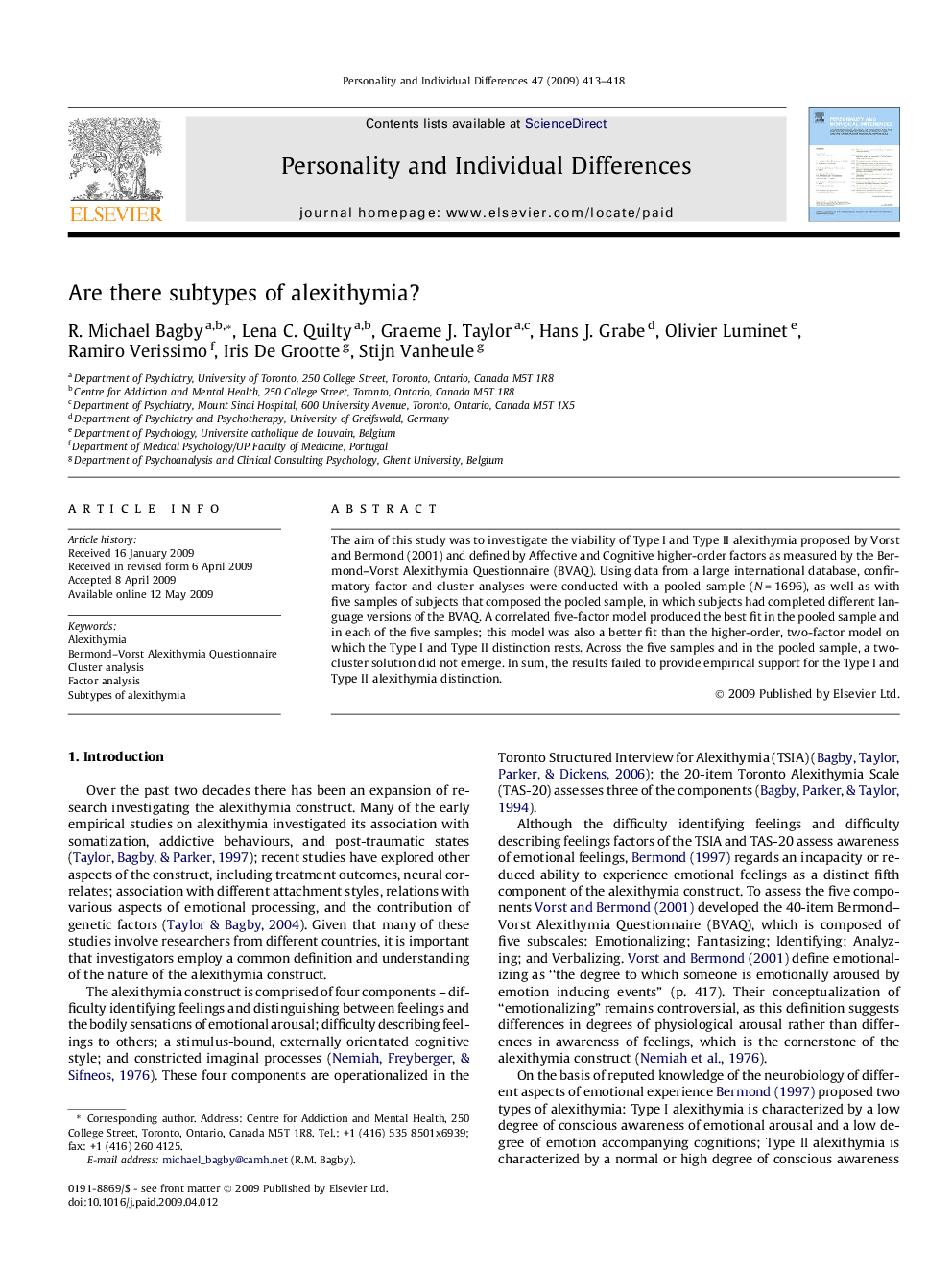| کد مقاله | کد نشریه | سال انتشار | مقاله انگلیسی | نسخه تمام متن |
|---|---|---|---|---|
| 892066 | 914066 | 2009 | 6 صفحه PDF | دانلود رایگان |

The aim of this study was to investigate the viability of Type I and Type II alexithymia proposed by Vorst and Bermond (2001) and defined by Affective and Cognitive higher-order factors as measured by the Bermond–Vorst Alexithymia Questionnaire (BVAQ). Using data from a large international database, confirmatory factor and cluster analyses were conducted with a pooled sample (N = 1696), as well as with five samples of subjects that composed the pooled sample, in which subjects had completed different language versions of the BVAQ. A correlated five-factor model produced the best fit in the pooled sample and in each of the five samples; this model was also a better fit than the higher-order, two-factor model on which the Type I and Type II distinction rests. Across the five samples and in the pooled sample, a two-cluster solution did not emerge. In sum, the results failed to provide empirical support for the Type I and Type II alexithymia distinction.
Journal: Personality and Individual Differences - Volume 47, Issue 5, October 2009, Pages 413–418